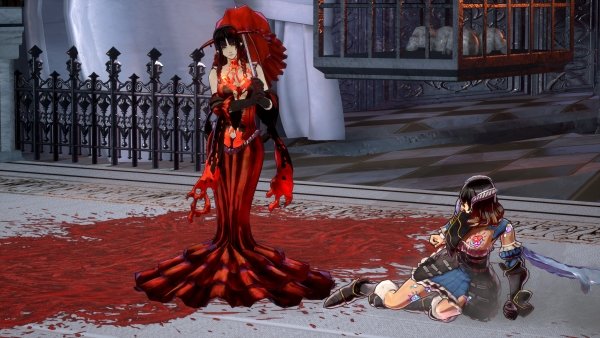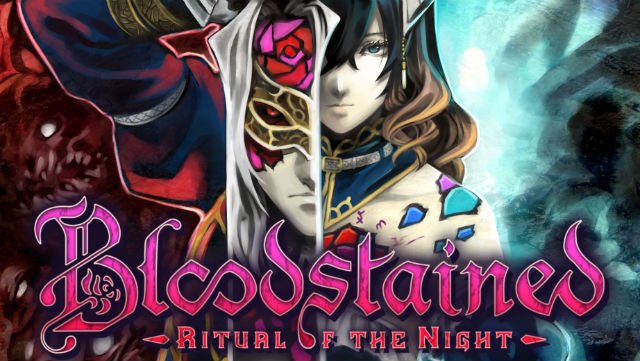Metroidvanias have a tendency to begin blurring together the more of them you play, and their endless abundance at trade shows hasn’t exactly helped this. When the former producer of the Castlevania series decides to show off his new game, though, you’d be a fool not to pay attention. While my time with Bloodstained: Ritual of the Night didn’t have me hailing it as a genre-reinventer, I did enjoy its several unique attributes while traversing its dark and gothic world.
To start, it’s important to note the obvious: the game is a sidescroller utilizing polygonal graphics (as opposed to sprites), a method known to many as 2.5D. I won’t cry over spilt milk for long, but I’ll be honest and outright – I’m not a fan of the style, and I don’t know anyone who is. Ritual of the Night has a lovely aesthetic that shines through graphical trappings, and the game does make do with what it can admirably. Still, from where I’m sitting I just don’t see any benefit to 2.5D other than cost-cutting, and while Kigarashi has said otherwise, it’s possible that’s the only real reason.
My demo was comfortable and lengthy, with headphones for immersion and a gamepad for full control over orphaned protagonist Miriam and her tricky situation. Essentially Miriam is cursed and slowly crystallizing, a condition that allows her to reap a variety of powers by defeating hellish enemies and absorbing them. The game’s setting is, as you may have guessed, a demon-infested castle, and upon dropping in my adventure began.
Ritual of the Night’s gameplay is simple, yet stylized. After mere minutes I’d acquired the ability to hurl fireballs at enemies, aiming them deftly by use of a right analog stick that maintains precision control over Miriam’s arm. Animations in the game are fluid, and Miriam’s base slasher moveset proved plenty capable disposing many of the horrors I encountered, even as my collection of new powers grew. True to it’s name almost every behavior results in blood strewn throughout the environment, as even toasting a small winged demon or bat promptly explodes it, gallons of blood dripping. To be clear, this is far from a complaint; Bloodstained’s gruesome demeanor is generally all in good fun, and suits its premise with ease.
As you might expect the map is slowly uncovered upon entering each individual room, and while I didn’t encounter too many surprises as I linearly progressed, I was stumped enough on occasion to require backtracking through an area or two. Among my favorite acquired abilities was the ability to instantly unleash a skeletal feral dog or hellhound; the blueish creature quite literally tumbles from Miriam’s outstretched hand and toward enemies, tearing them up until it eventually disappears. My suspicion is that Bloodstained won’t often demand you use a certain power to defeat or clear enemies, and this is fine. The game’s volume of choice boils down to establishing personal preferences and reveling in their bloodsoaked results.

My demo concluded with a boss fight, and while I don’t actually understand what occurred, I was made to square off with a crimson, succubus-like demon and her arsenal of literal blood waves and other fast-moving projectile devilry. The encounter presented challenge but with potions was easily winnable, Miriam’s victory netting her yet another ability to toy with. My demo ended there, and while I can’t yet say whether or not Bloodstained is truly worthy as Castlevania’s spiritual successor, it certainly looks and acts like it.
Bloodstained is set to arrive next year, and while the game still felt unfinished to me, several more months in the coffin might render Gebel’s castle ready to go in time for the game’s release. I’m guessing those expecting a total genre reinvention just because Koji Igarashu is involved are going to end up disappointed, but for everyone else, Bloodstained: Ritual of the Night has potential as a gruesome, canny homage to the very series that spawned it.







